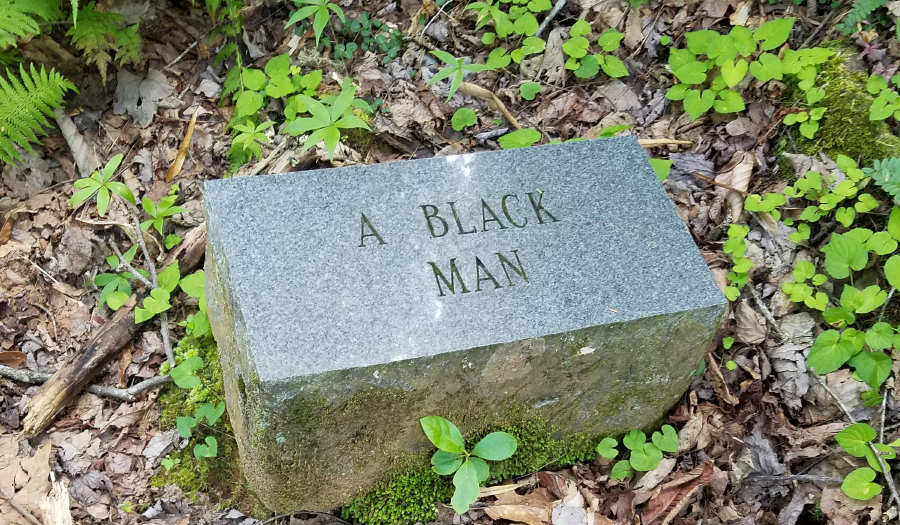By MARK PRICE
Forneys Creek, NC (AP) – There are more than 150 historic cemeteries in the Great Smoky Mountains, but it’s the Hidgon Family Cemetery that has become a source of mystery for the National Park Service.
There, on the North Carolina side of the park, is a slanted granite tombstone that says only: “A Black Man.”
No name, no date, no epitaph.
Who was he? And why was he afforded a costly grave marker with no hint of identify?
It’s a haunting mystery park historians say they’re determined to solve as part of a project documenting “the African American experience in the Smokies.”
“This research project is facing common obstacles: the African American members of the communities are nameless and faceless in typical historical records,” the park service wrote on Feb. 18 on Facebook.

Grave Stone: A Black Man
“Documents like birth/death records, photos, personal journals, family Bibles, and similar forms of historic reference materials have been difficult to uncover, because for many of the African American people of the time, they just don’t exist,” the park posted.
The grave for “A Black Man” has spawned its share of theories. Some bloggers believe the man was “elderly” when he died around 1920, during a period when the “Spanish Flue” had overtaken Swain County, according to a report in Reflections of Olde Swain.
The “unknown black man lived and died on Hazel Creek during the logging era” and was a community hero of a sort, reports FindAGrave.com.
“He tended the sick during the Influenza out break of the early twentieth century, but fell ill himself and died. No one remember(ed) his name, but many are aware he gave his life serving the people of Hazel Creek,” the site says.
Another report in GoSmokies.com notes the tombstone is just one of the oddities involving the grave. The man’s grave is set apart from the others in the cemetery and faces the wrong way, the site says.
“Every other grave in this cemetery faces east toward the rising sun, symbolic of facing the Second Coming that would raise the dead. The lone black man’s grave faces north,” GoSmokies.com says.
His grave is one of several the park is now looking into as part of the research project. There are six more graves near the Mingus Mill marked only with field stones, and the park believes they were “enslaved people from the 1800s.”
With little or no information to go on, park historians are turning to the public for help.
“Do you have records, photos, or personal stories of the African American communities in and around Great Smoky Mountains National Park? Are you willing to share with us?” park officials asked on Facebook.
Anyone with such documents is asked to contact Rhonda Wise at rhonda_wise(at)nps.gov.








